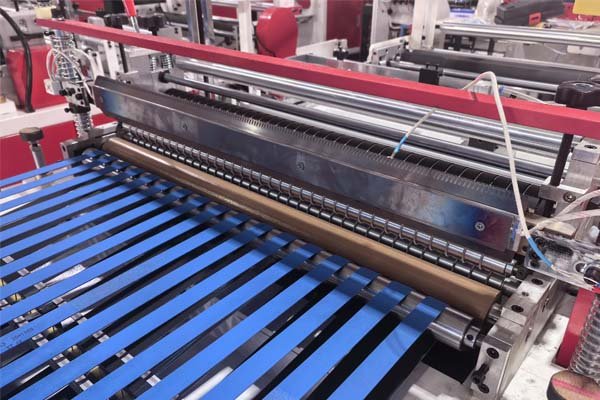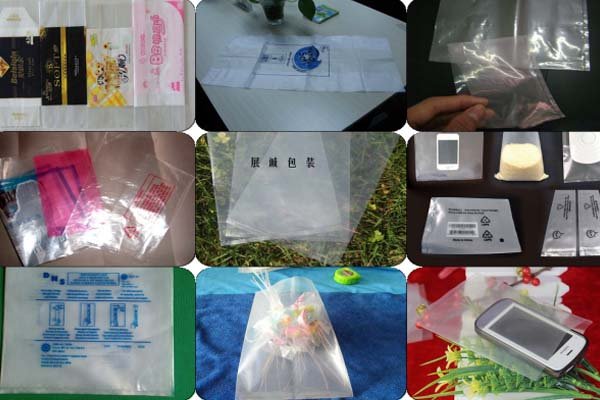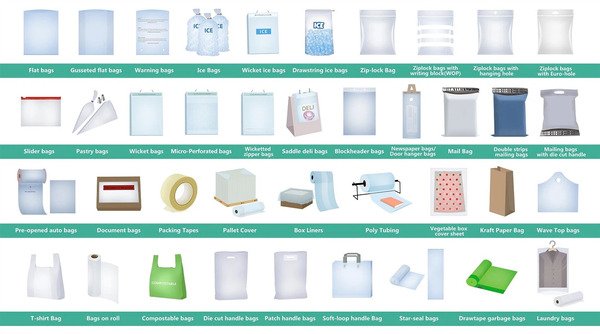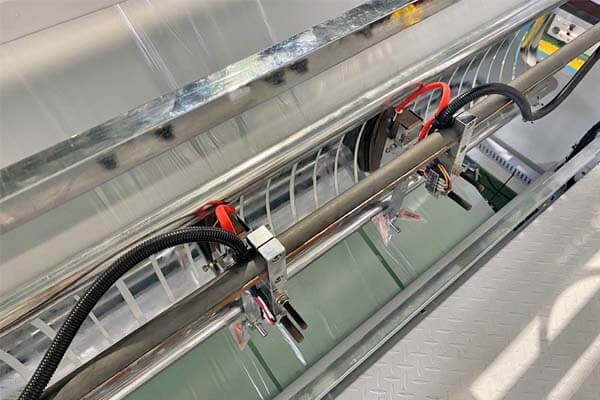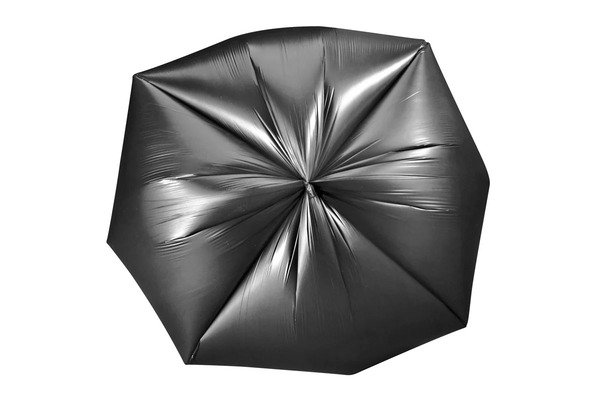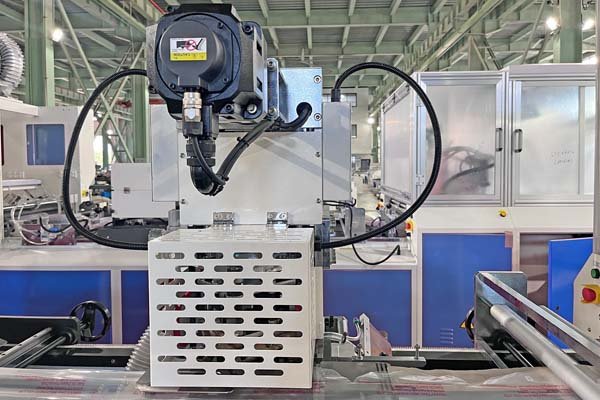
A servo control system is a closed-loop control mechanism1 that uses feedback to accurately manage an object’s position, speed, and torque. It typically includes a servo motor2, a controller, and a feedback device (like an encoder) that allows for highly accurate performance.
These systems are widely used in precision manufacturing processes, such as automated bag-making. The controller issues movement commands to the servo motor, while the encoder reports the motor’s actual position. Any mismatch between the desired and actual positions is corrected in real-time by the controller. This continuous feedback loop is essential for consistent, high-speed operations.
In applications such as T-shirt bag machines, servo systems ensure exact film feed lengths before cutting. In heavy-duty machines, they manage the force and timing of sealing bars, resulting in stronger seals and reduced material waste. This level of precision is not achievable with traditional open-loop motor systems.
What Is the Function of a Servo Controller?
The servo motor provides the mechanical action, but the servo controller—also known as a servo drive—is the system’s central control unit.
Its main function is to take a low-power command signal and amplify it into a high-power output that drives the servo motor with precise control over position, speed, or torque.
Beyond amplification, the servo controller is responsible for interpreting commands, managing feedback, tuning performance, and protecting the motor. These tasks combine to create a reliable and responsive system.
1. Command Interpretation and Execution
The controller receives input signals from the machine’s PLC (Programmable Logic Controller3). These low-voltage commands—such as "move the sealing bar 50 mm"—are translated into the high-power electrical signals needed to drive the motor. This happens continuously throughout production.
2. Loop Closure and Error Correction
A servo system’s defining characteristic is its closed-loop feedback mechanism.
- Command Signal: Target position (e.g., “turn 2.75 revolutions”).
- Feedback Signal: Actual position reported by the encoder (e.g., “turned 2.74 revolutions”).
- Error Signal: The difference (0.01 revolutions).
The controller immediately adjusts power to eliminate this error, ensuring accurate motion control.
3. System Tuning and Optimization
Servo controllers can be fine-tuned to accommodate different materials and production requirements.
| Tuning Parameter | Description | Application in Bag Making |
|---|---|---|
| Proportional (P) | Reacts to current error size | Enhances responsiveness for high-speed production |
| Integral (I) | Corrects long-term steady errors | Prevents cumulative length inaccuracies |
| Derivative (D) | Anticipates future errors | Reduces overshooting for smoother operation |
4. Protection and Diagnostics
Modern servo controllers also safeguard the motor by monitoring for overcurrent, high voltage, and overheating. If abnormal conditions are detected, the controller can shut down the system safely. Advanced models offer IoT diagnostics for remote monitoring and support.
What Is the Principle of a Servo System?
At its core, the servo system operates on a simple principle: continuous feedback and real-time correction.
The system compares the command input (desired result) with the actual output (measured by the feedback device) and automatically adjusts the motor until the error is zero.
Key Components

- Controller – Receives the command signal from the main PLC.
- Actuator (Servo Motor) – Executes the physical motion.
- Feedback Device (Encoder) – Monitors actual performance and reports it back.
How the Closed-Loop Works (Example: Lamination Pouch Making Machine)
- Command – The PLC sends an instruction (e.g., “feed 250 mm of film”).
- Execution – The controller powers the motor to move the film.
- Feedback – The encoder tracks the motor’s rotation and sends pulse signals.
- Comparison – The controller tallies the pulses and compares with the target.
- Correction – If misalignment is detected, the controller adjusts power output.
- Zero Error – The motor stops exactly at the target point.
This method ensures that every movement in the machine—whether sealing, cutting, or feeding—is precise and repeatable.
Importance in Quality Control
Servo systems offer consistent results, which are essential for manufacturing applications like courier bags, where seal integrity matters. In contrast:
- Without a servo: Inconsistent pressure may lead to weak seals.
- With a servo: Controlled force and timing produce uniform, high-strength seals.
What Is the Difference Between a Servo Controller and a VFD?
Although both devices control motors, servo controllers and Variable Frequency Drives (VFDs) are designed for different functions.
Servo controllers are built for precision motion control in closed-loop systems, while VFDs focus on speed control in open-loop systems.
Core Differences
- Servo Controller: Uses encoder feedback in a closed-loop to control motor position, speed, and torque.
- VFD: Alters motor speed by adjusting the frequency of the supplied power, often without feedback.
Application Focus
- Servo Controller: Suitable for tasks needing accurate positioning and quick response—e.g., film cutting, sealing bar movement.
- VFD: Better for consistent-speed tasks—e.g., fans or conveyor belts.
Comparison Table
| Feature | Servo Controller | Variable Frequency Drive (VFD) |
|---|---|---|
| Primary Function | Position, speed, torque control | Speed control only |
| Precision | Very High | Low to Moderate |
| Feedback Loop | Closed-loop (mandatory) | Open-loop (usually) |
| Response Time | Fast | Slower |
| Motor Type | Servo motor with encoder | Standard AC motor |
| Setup Complexity | High (requires tuning) | Low (easy setup) |
| Cost | Higher | Lower |
| Best Use Case | Cutting, feeding, sealing | Ventilation, material transport |
Choosing the Right System
- Servo systems are necessary for tasks that demand accuracy, such as medical bag sealing or zip placement.
- VFDs are practical for secondary operations like driving exhaust fans or simple conveyors.
Bag-making systems often use both: servo controllers for critical processes and VFDs for auxiliary functions.
Conclusion
Servo control systems enable high-precision, high-speed manufacturing by using closed-loop feedback to eliminate errors. They ensure consistency, improve quality, and reduce material waste. These systems form the foundation of modern, efficient machinery used in industries like automated bag production.

